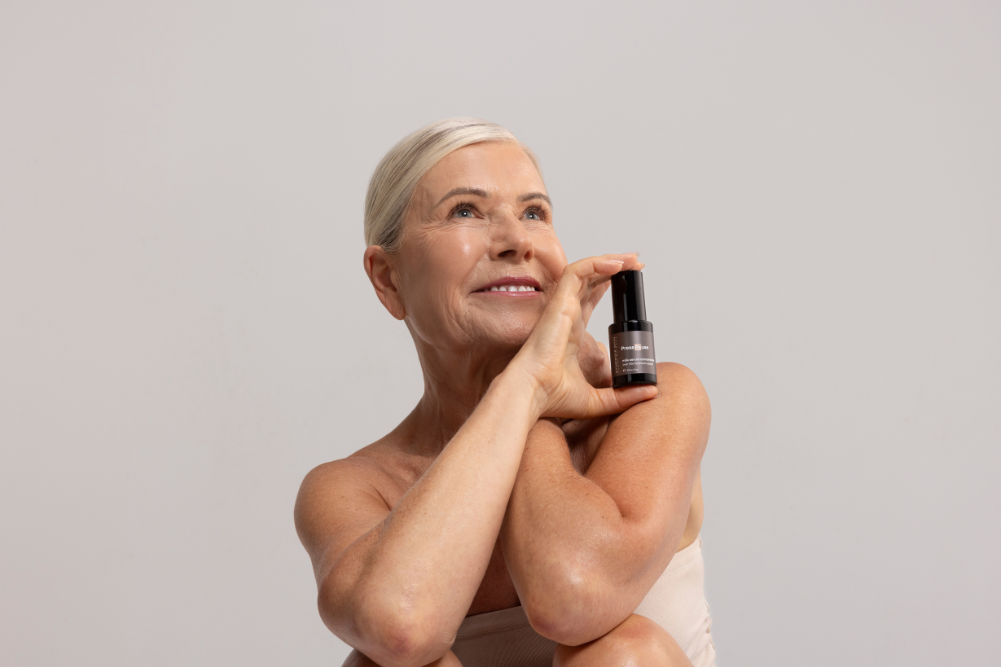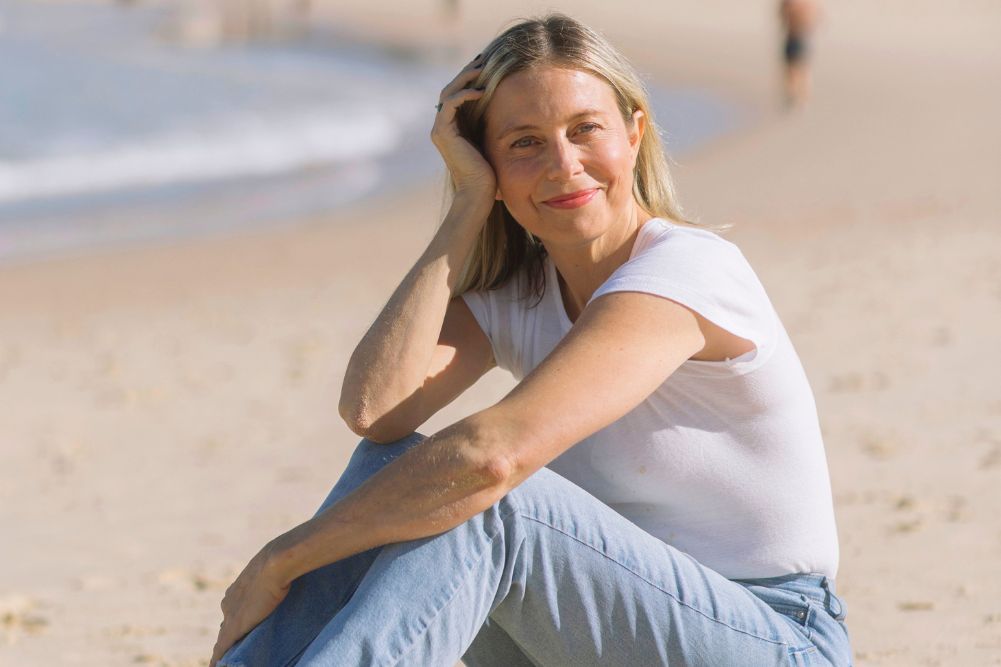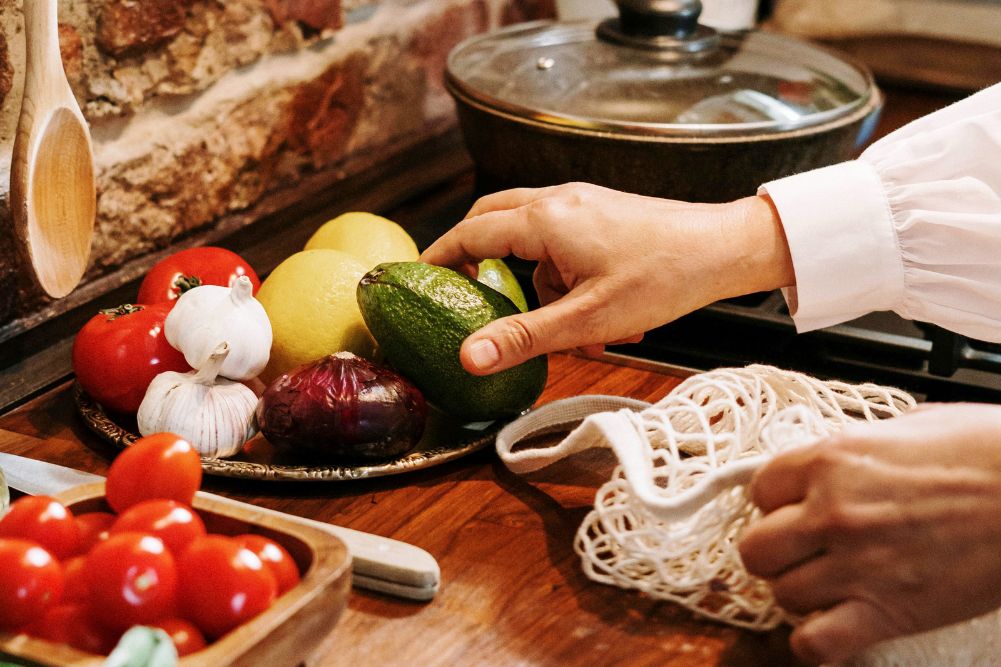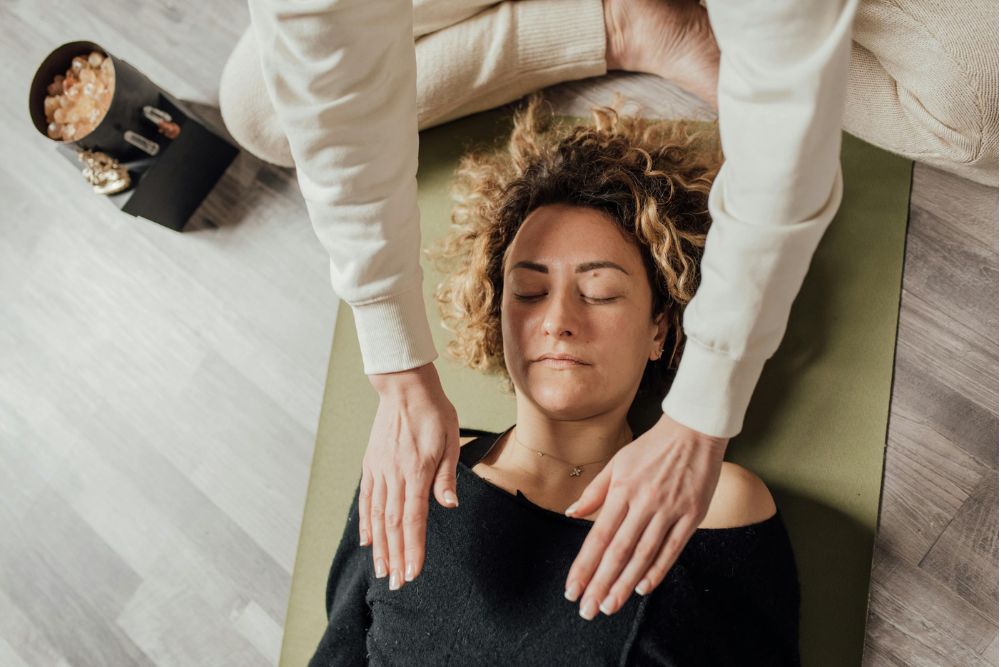Demystifying detox
In today’s world, with its post-industrial levels of pollutants, toxins are everywhere. The rise in the pollution of earth, sea and sky smothers us in chemicals our bodies can’t tolerate. These linger unchallenged until expelled from the body through detoxification. For our best chance at total health we must rid ourselves of their sickening effects.
Why detox?
Jane Alexander, author of The Detox Kit, says, “The only people who don’t need to detox are those amazing people who already eat a great organic diet, who exercise, meditate and are stress free … in other words, not many!”1
There’s a variety of symptoms signalling the need for detoxification. These include autoimmune diseases, headaches, joint and back pain, arthritis, fatigue, circulatory problems, constipation, ulcers, frequent colds, allergies, acne, haemorrhoids, angina pectoris and insomnia. “A good detox twice a year (ideally in spring and autumn) will make a huge difference in terms of health, wellbeing, positive mood and keeping chronic illness at bay,” says Alexander.
While the physical effects of detoxification are most measurable, the emotional reasons for detox are also substantial. Elson M. Haas MD, author of multiple books on nutrition, including The New Detox Diet, believes the benefits include increased spirituality and creativity. In addition, he says, “I believe that many ‘detox’ processes can help rejuvenate us and prevent degeneration. Mental detoxification is also important. Cleansing our minds of negative thought patterns is essential to health; the physical detoxification helps this mental process.”2
Ironically, although detox can prevent and treat disease, certain illnesses make detox a forbidden conquest. “There are a few people who SHOULD NOT detox. If you’re pregnant or breastfeeding, your body has other priorities,” says Alexander. “If you have diabetes, blood sugar imbalance or eating disorders, you would need to be strictly supervised by a physician while detoxing — and you would have to have your diet specially adapted, again by a physician.”
Detoxification in history
More than 2000 years ago, Hippocrates, the founder of Western medicine, said, “Give me the power to create a fever and I shall cure any disease.” Isn’t a hot head a problem, not a solution, you ask? Actually, no. Fever is the body’s response to infection and an attempt to detoxify. When infection is present, the inflammatory response is triggered, which elevates body temperature. What we refer to as “fever” is the body trying to purge itself of poisons through sweating. Before the advent of modern medicine, people discovered this empirically.
Both Western and Eastern cultures have sought the healing power of heat for thousands of years. Ayurvedic medicine, an ancient Indian system of holistic health which began 4000 years ago, was the first system to appreciate the power of perspiration. Ayurveda prescribes panchakarma therapy for toxin removal, which includes a steam bath. However, this isn’t your typical sweat fest. The treatment, officially known as vashpaswedanam, consists of lying under boiled medicinal plants and absorbing the resultant heat. This ancient practice is still in use today.
Traditional Chinese medicine, which began around 2000 years ago, also employs detoxification. So does Tibetan medicine. In fact, all Asian traditional medicine uses detoxification as a foundation for healing.
As Hippocrates suggests, the practice of detoxification wasn’t limited to the East. Two thousand years ago, the Romans began building saunas, which detoxified the body by forcing a sweat. The caldarium was the hottest room in the Roman bathhouse, boasting a temperature of 100°F (38°C) and 100 per cent humidity.
Sixteen hundred years later, the Finnish were also feeling the heat. According to Mikkel Aaland, author of Sweat, “Until the 16th century, Finnish bathing habits were virtually unrecorded,” though their famed love of the sauna may well have predated this time.3
Colonic irrigation, which uses water enemas that travel the length of the colon, is another detoxifier with a long history. The use of enemas in Egypt was recorded as far back as 1500BCE. Early enema treatments were performed in rivers, using a hollow reed.
American settlers also appreciated the healing power of enemas. Before the explorers Lewis and Clark embarked on the first overland expedition from St Louis to the Pacific in 1804, a physician instructed them on how to use an enema in the case of fever or illness. Colonics was particularly popular from the 1920s to 1940s.4
Fasting and dietary detox
Fasting, which since time immemorial has been considered by some to be a conduit to the divine, is now often performed for its reported health benefits. Today’s fasts differ from the water-only starvation practised in the past. In contrast, most fasts recommend we have food and nourishing liquids along with water.
Herbert Shelton MD (1895-1985) was one of the best-known advocates of fasting. In 1978, he formed the International Association of Hygienic Physicians, a professional association for licensed primary-care physicians (medical doctors, ostoeopaths, chiropractors and naturopaths) who specialise in therapeutic fasting supervision. In addition to 35 books, Shelton published the Hygienic Review, in which he wrote, “Restoration of normal nutrition depends upon the removal of the impairing causes and not upon overcrowding an already impaired nutritive system with more food or with more food of a given kind.”5 In other words, less is more.
Fasting is somewhat controversial in conventional medicine, being viewed by some as useless or even dangerous. Complementary medicine is kinder in its view and, according to Alexander, “Naturopaths say it’s safe if carried out under careful supervision, and it’s particularly beneficial for conditions such as asthma, sinusitis, rheumatism and colitis.” In a study published in the journal Clinical Ecology, sufferers of rheumatoid arthritis showed an improvement in general function after only seven days of fasting.6 The participants were on a severe fast without any foods, though when you’re fasting you don’t have to go the whole hog.
Just as there are different types of detoxification, there are various forms of fasting. In compiling The Detox Kit, Alexander found four variations of fasting worth mentioning: the Guelpa, or saline, fast, the Schroth Cure, the MAYR Cure and Mono-diets.
The Guelpa fast is eponymous for Dr Guelpa, who advocated that this three-day juice, broth and Epsom salts fast be followed by a strict vegetarian diet.
In contrast with this decidedly wet fast, the Schroth Cure encourages mostly dry fare such as semi-stale bread and is fat and salt free. Traditionally, this fast lasts for three weeks. Don’t worry, though — the regular glasses of dry wine it recommends will help the time fly by!
One of the more notable aspects of The MAYR Cure is that, although its goal is intestinal detoxification, this is achieved via the mouth. There are no enemas needed. As with the Schroth Cure, MAYR clients eat stale bread. However, this dry cuisine is tempered with sheep’s milk and herbal tea. The MAYR Cure involves counselling and bodywork and should be undertaken only with the care of a MAYR-trained physician.7
Mono-diets are named for the limited food and liquid choices. These range from red grapes and juice to fruit-only meals.
To combat potential danger, always have your fast supervised. “Appropriate laboratory monitoring is advisable for all fasting patients prior to initiating the fast. For all fasts beyond seven days, ongoing continuous physiological monitoring shall be undertaken as deemed appropriate within the view of the attending physician,” advises The International Association of Hygienic Physicians.8
It should also be considered that fasting, especially a strict fast devoid of all foods, isn’t suitable for everyone, simply because of practical considerations. “I don’t think it’s safe or practical to try fasting, or juice fasting, for example, when you’re working,” says Alexander.9
Dietary detoxification demands we limit our food and sometimes calories. While there’s a variety of detox plans that differ considerably, they all share similarities. Most are centred around organic plant or plant-based foods, have little meat or fat, have little or no salt and encourage plenty of filtered water and herbal teas. These foods are chosen for their lack of toxins.
Colon hydrotherapy
In addition to being at the centre of the body, the colon is at the centre of detoxification. The colon is connected to every system of the body through reflex points. Much like reflexology, when we stimulate these various points we also stimulate their related organs.
Although natural medicine respects the importance of all the organs in detoxification, the colon is the one we have most control over. And we should relish this control. Without cleansing the colon we are interrupting the body’s ability to properly detoxify, as well as limiting the efficiency of our nutrition. It’s been found that when the colon’s surface cell layer is healthy, not only do nutrients pass more readily into the bloodstream but the absorption of toxins is also impaired.
What if you follow a healthy diet? Do you still need colon hydrotherapy? With or without a strict health regime, waste deposits can linger for years in the colon. Even a person of average health and weight can have 5kg to 12kg of accumulated waste matter sticking to their colon. Colon hydrotherapy can help you rid yourself of this burden and clear the way for a more thorough detoxification.
An average colon hydrotherapy session takes 45 minutes and involves filtered water being moved in and out of the colon. Despite the common fear of this process being painful, most people report it is relaxing and even pleasurable. Its benefits include being an excellent screening measure for colorectal cancer, but certain people should avoid the procedure: for example, those with diverticulitis, ulcerative colitis, Crohn’s disease, severe haemorrhoids or a rectal or intestinal tumour.
Massage — a detox helper?
While colonic irrigation is a popular means of purifying the gastrointestinal tract, massage is also an effective detoxification aid. Massage of the colon and abdomen allows you to release tension and increase blood circulation and lymph flow. It also helps alleviate constipation, which in turn supports the natural release of toxins.
Some types of massage focus on the belly’s needs more than others. Swedish massage was the first to use massage for detoxification. This massage, with its coverage of the entire body, manages to include the tummy. Other forms of massage focus more exclusively on this region. For example, although the Taoist-Chinese practice of Chi Nei Tsang (pronounced “chee nay song”) addresses all the body’s systems, it works deeply and comprehensively on the abdominal area.
Hidden dangers
Like working up a good sweat to experience joy-promoting endorphins, detoxifying isn’t always pretty. Consider the Herxheimer Reaction, also known as the “healing crisis”. This occurs when your body detoxifies too quickly, meaning toxins are released into the body faster than your body can eliminate them. Symptoms include nausea, vomiting, headaches and malaise. There are ways to reduce the severity of the symptoms, though:
- Drinks lots of pure water.
- Get lots of sunshine.
- Take detoxification slowly, one step at a time.
- Don’t increase the dose of herbal medicines or supplements.
- Take detox baths.
- Use aromatherapy essential oils such as peppermint, birch and wintergreen to alleviate aches.
- Sweat through exercise, saunas and baths.
- Avoid chemicals and refined/processed foods.10
Headaches are the most common side-effect of detoxifying, for which Alexander recommends lavender oil applied to the temples.
A more subtle hazard of detoxification is becoming obsessed with purity. It’s possible to overdo detoxing and Alexander warns against “long, stringent measures”. In detoxification, as in life, moderation is everything. “If you’re fanatical about being squeaky clean on the inside as well as the outside, you’re going too far,” she cautions. “If you find yourself discussing the workings of your bowel movements at dinner parties, it’s truly time to get a life!”
References
- Jane Alexander, The Detox Kit (UK: Hay House, 2005). See also www.janealexander.org.
- Elson M. Haas, Staying Healthy with Nutrition: The Complete Guide to Diet and Nutritional Medicine (California: Celestial Arts, 1992). See also www.elsonhaas.com.
- Mikkel Aaland, Sweat: An Illustrated History of the Sauna and Sweatbath in Finland and Other Cultures (California: Borgo Press, 1998).
- The Association & Register of Colon Hydrotherapists (UK), “A Brief History of Colon Therapy”, www.colonic-association.org/history.html.
- Herbert Shelton, “How diseases are cured”, cited at www.drbass.com/disease-cure.html. See also http://naturalhygienesociety.org.
- G. Kroker et al, “Fasting and rheumatoid arthritis: a multicentre study”, Clinical Ecology 2:3 (1984):137-44.
- See www.mayrtherapy.com.
- www.iahp.net/fast.htm.
- Jane Alexander, interview by author, 1 June 2005.
- Ted H. Spence DDS, ND, PhD/DSc, MPH, “Detoxification Details”, http://chetday.com/spencedetox.html#v.
Galina Pembroke is an internationally published writer living in Nanaimo, British Columbia, the most westerly Canadian province.
Detox bath recipes
Basic salt soak bath formula
2 cups baking soda
1 cup sea salt
1 cup Epsom salts
1-2 tbsp glycerine (per bath)
Combine the baking soda, sea salt and Epsom salts (makes 4 cups). Pour ¼ cup into a bath while filling it. Add the glycerine to the water to prevent your skin drying out. Store remainder in a sealed glass jar.
(from Annie Berthold-Bond, www.care2.com/channels/solutions/self/146)
Mineral bath salt
10 drops lavender essential oil
6 drops geranium essential oil
5 drops pink grapefruit essential oil
7 drops bergamot essential oil
½ cup fine sea salt or Dead Sea salt
¼ cup borax
¼ cup baking soda
Mix the essential oils with the salt then add the borax and baking soda. Add to a bath and soak for at least 15 minutes. Yields two baths.
(from Larissa Jones, www.herbsplus4health.com/page_detoxactivnutri.html)
Epsom salts & ginger detox bath
1 cup Epsom salts
2 tbsp fresh ginger (stirred in a cup of water first)
Add the ingredients to a bath and soak for no longer than 30 minutes. The ginger can be astringent, so drink plenty of water afterwards.
(from Robin Mayfield, www.drrobinmayfield.com/newsletters/newsletter-4.html)
Kelp detox bath
5 drops pink grapefruit essential oil
4 drops geranium essential oil
7 drops thyme essential oil
½ cup sea salt
2 tbsp jojoba oil
1/8 cup glycerine
1/8 to ¼ cup dried kelp
Add the essential oils to the sea salt and stir with a wooden spoon. Blend the jojoba oil into the salt mixture then add the glycerine. Add the kelp according to the desired strength. Yields one bath
(from Larissa Jones, www.herbsplus4health.com/page_detoxactivnutri.html)
Caution: Do not take hot baths or salt baths if you have a heart condition, high blood pressure, arteriosclerosis or diabetes. Consult the health practitioner supervising your detox program before using detox baths.







